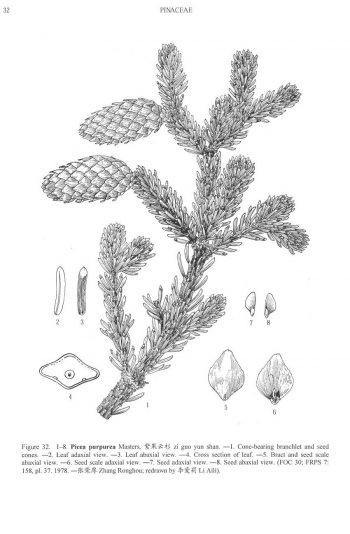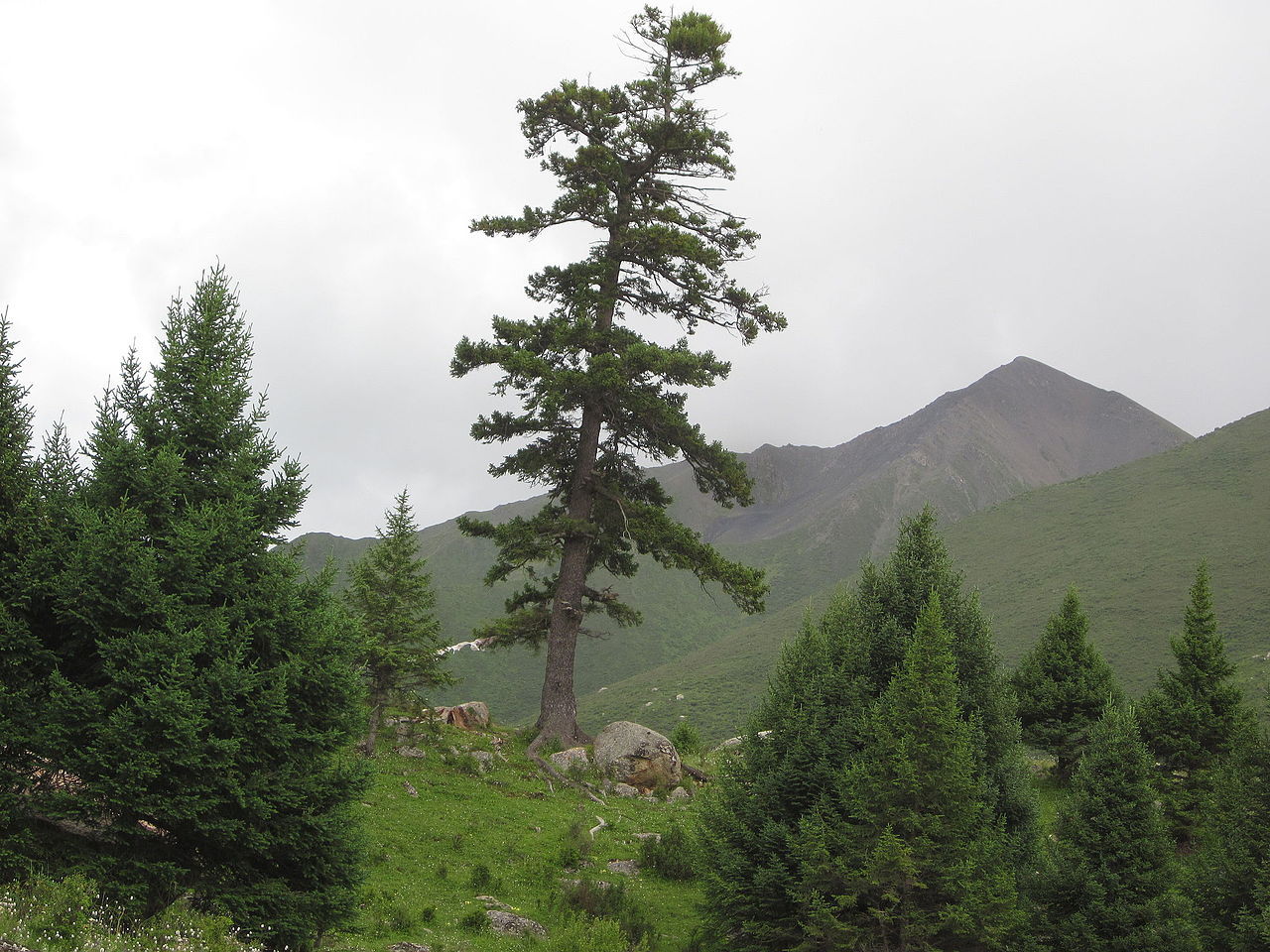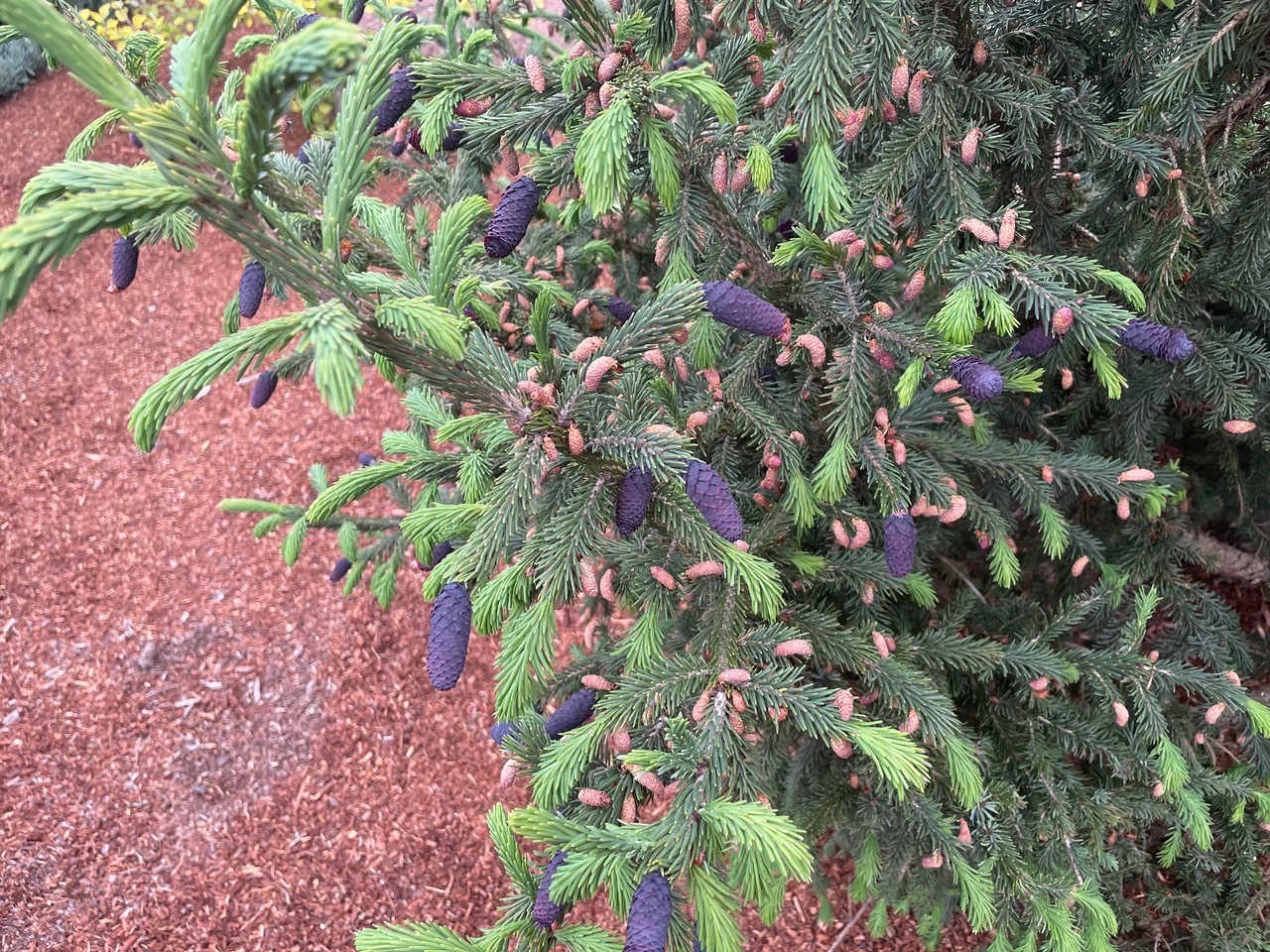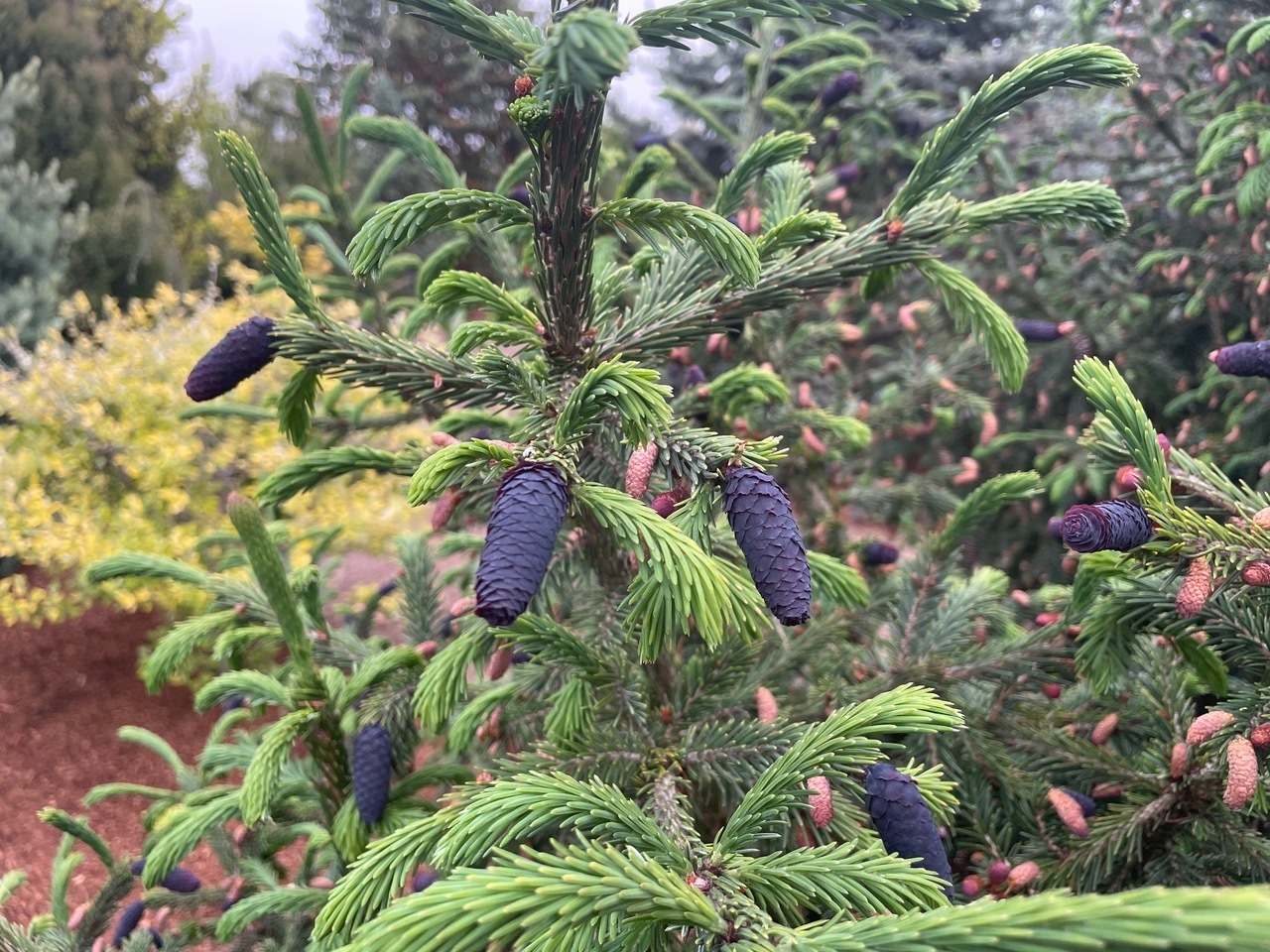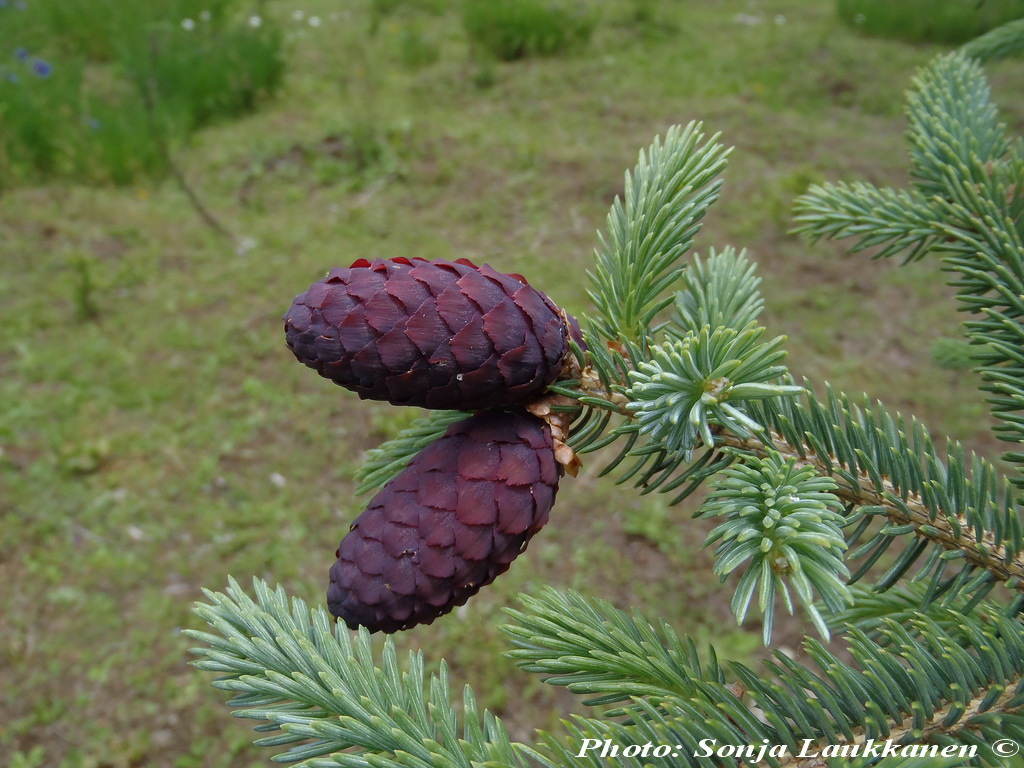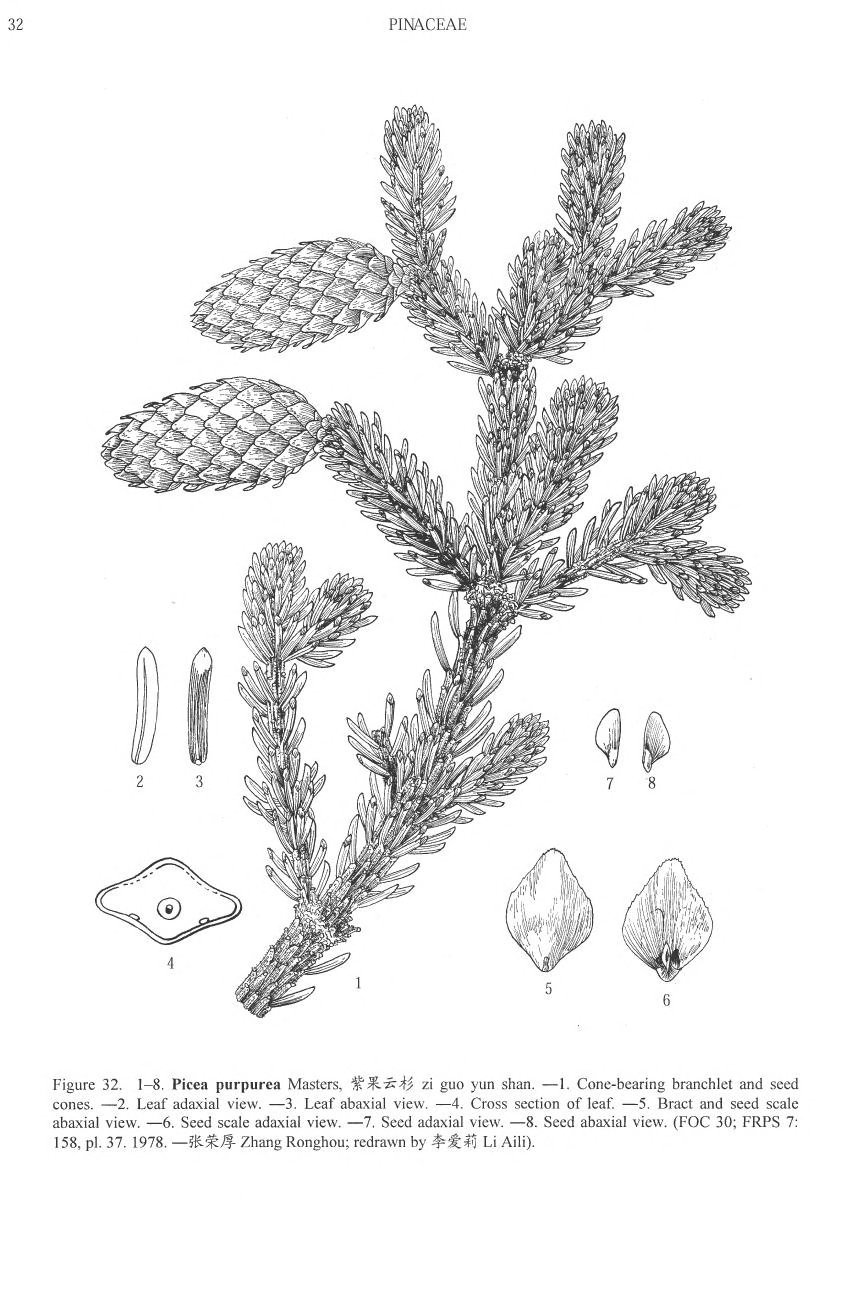Picea purpurea, as described in 1906 by Maxwell Tylden Masters (1833 - 1907), in Journal of the Linnean Society, Botany, 37th edition, is commonly known as purple-cone spruce; as well as ç´«æžœäº‘æ‰ (ziguo yunshan) in the Chinese language. The species name acknowledges the attractive reddish-purple immature seed cones.
Description. Purple-cone spruce is an evergreen coniferous species of tree that grows to mature heights of 165 feet (50 m) tall; with a trunk up to 40 inches (100 cm) in diameter, measured at breast height; and a pyramidal crown.
- Bark is dark gray in color and scaly.
- Branchlets are initially yellow, graying with age, and densely pubescent.
- Leaves (needles) spread radially about the branchlet, or closely appressed forward on upper sides, spreading on lower side. Individual needles are straight or slightly curved and flattened-rhombic in cross section. They measure 0.28 to 0.48 inch (7 - 12 mm) long and 0.06 to 0.72 inch (1.5 - 1.8 mm) broad, with 4 to 6 stomatal lines along lower surfaces, and variable apices.
- Pollen cones measure (15 - 25 mm) long and are red in color.
- Seed cones are initially reddish to very dark purple in color, with ellipsoid shape, measuring 1 to 1.6 inches (2.5 - 4 cm) long and 0.68 to 1.2 inches (1.7 - 3 cm) wide.
- Seed scales are loosely arranged with a rhombic-ovate shape. They are described as papery, undulate, and erose-denticulate.
- Seeds measure circa 0.36 inch (9 mm) long including a brown, purple-spotted wing. Pollination takes place in April, with seed maturity in October.
Distribution. This species is native to China - southern Gansu, eastern Qinghai, and northwestern Sichuan provinces; where it can be found growing in mountainous terrain; predominantly on north-facing slopes, at elevations of (2,600 - 3,800 m) above sea level.
Hardy to USDA Zone 4 - cold hardiness limit between -10° and 0°F (-23.3° and -17.8°C).
